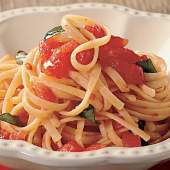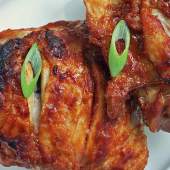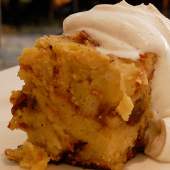Fall Flavors – Ginger

What is a flowering plant, a spicy flavoring, a distinctive fragrance, and a versatile folk remedy?
There are precious few edibles that are known to be delicious and therapeutic, but ginger (or ginger root) is definitely one of them. As with our old friends pumpkin spice and maple, as the leaves change color, the days grow shorter, and the temperature drops, we start to crave sweet fall treats such as gingerbread, ginger snaps, and ginger-molasses cookies. (And savory ones like carrot-ginger soup.) So this is the perfect time of year to find out more about this spice rack essential.
Ginger, as with most of our spices, has been around for a very long time – Confucius first wrote about it in China sometime after 475 BC, and we know that he habitually consumed some at every meal. A close cousin of cardamom and turmeric, ginger is part of the Zingiberaceae family – its primary active compound is called, appropriately enough, gingerol – and it has strong antioxidant and anti-inflammatory qualities. From our WOF treatise on gingerbread: “Since its discovery in Asia at least 5,000 years ago, extract from [ginger root] (Zingiber officinale) has been used as an herbal remedy for a wide variety of ailments: the common cold, migraines, arthritis, menstrual issues, nausea due to motion and morning sickness, respiratory problems, and even hypertension.” In addition to all that, testing has indicated that consumption of ginger might help you regulate your blood sugar if you’re diabetic, alleviate pain from a burn, fight gum disease, boost your memory, lower your bad cholesterol, shore up your immune system, and even lose weight.
Talk about a superfood! A few more quick facts:
- Before and during the Renaissance, ginger was a prized import in the West, and a very expensive one – in Europe, only the wealthy had access to it, with the price of a pound of ground ginger being equal to that of a sheep.
- While ginger is officially an herb, its root is not actually classified as a root but as a rhizome, which is defined as an underground stem.
- Ginger plants can be grown at home, but do best in warmer (even tropical) climates. Its blossoms are yellowish-green in color, and a typical plant can reach a height of three to four feet.
- Essence of ginger is a frequent additive to perfumes, soaps, cosmetics, body lotions, and facial treatments.
But of course we’re here to talk about food, so here are some dishes that benefit mightily from ginger:
Baked goods – In addition to the gingerbread and cookies mentioned above, you can add ginger to muffins, cakes, breads, donuts, pies, puddings, and other desserts. It is often paired with carrots, and goes well with most fruits including oranges, apples, limes, coconuts, and blueberries.
Sauces – Ginger is a common traditional ingredient in Asian cuisines, but it is a part of plenty of other kinds of sauces and marinades across ethnicities, on everything from beef to chicken to pork to seafood, and in pastas, noodles, and rice dishes, on vegetables and other side dishes, as well as in dipping sauces. Also, ginger is a frequent addition to salad dressings and vinaigrettes – it’s a great complement to fresh greens.





